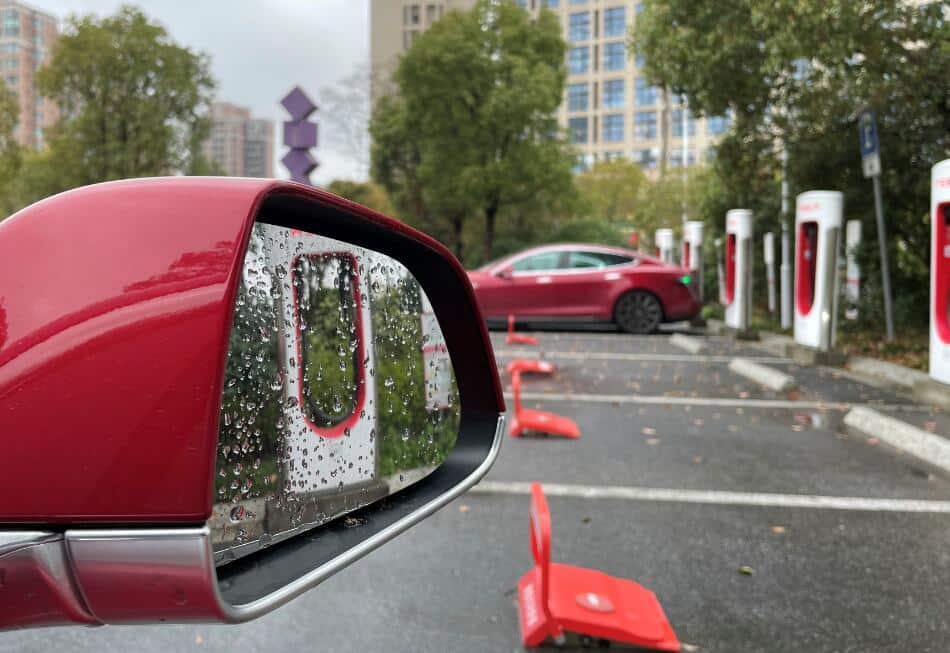
(Source: CnEVPost)
Tesla is conducting a huge recall in China, involving most of the vehicles it sold in the country since 2019. This is related to just the vehicle software though, and the company will provide fixes via OTA.
Tesla filed a recall plan with China's State Administration for Market Regulation (SAMR) and decided to recall a total of 285,520 vehicles effective immediately, information posted on the SAMR's website Saturday showed.
This includes 35,665 imported Model 3s produced between January 12, 2019 and November 27, 2019, 211,256 China-made Model 3s produced between December 19, 2019 and June 7, 2021, and 38,599 China-made Model Ys produced between January 1, 2021 and June 7, 2021.
These vehicles are prone to driver misactivation of the active cruise control system due to problems with the active cruise function, thereby creating a vehicle safety hazard, the recall statement said.
When the vehicle is in D gear and the driver toggles the right lever again in an attempt to switch gears, and when the vehicle makes a sharp turn and the driver mistakenly touches and toggles the right lever, the feature may be activated by mistake.
When active cruise control is mistakenly activated, the vehicle will accelerate to the set speed if the vehicle is set to a cruise speed other than the current speed and the current speed is lower than the set speed, the statement said.
This will lead to a sudden increase in vehicle speed, which will affect the driver's expectations and lead to misjudgment of vehicle control, which in extreme cases may lead to a vehicle collision, according to the statement.
Tesla will upgrade the active cruise control software for the vehicles covered by the recall free of charge through the OTA vehicle remote upgrade technology, which allows users to complete the software upgrade without having to visit a store, the statement said.
For vehicles that cannot be recalled through OTA technology, Tesla will contact users through service centers to upgrade the active cruise control software for free to eliminate safety hazards.
This is the latest recall in the Chinese market due to software design issues.
Late last month, BMW Brilliance, a joint venture between BMW and Brilliance Auto based in the northeastern Chinese city of Shenyang, announced a recall of 6,636 China-made iX3 electric vehicles with production dates from September 1, 2020 to April 30, 2021, effective June 1.
According to a statement posted on the SAMR's website, BMW Brilliance announced the recall because of a design issue with the software in the battery control unit of these vehicles, which poses a safety hazard.
BMW Brilliance will upgrade the battery control unit software for the recalled vehicles free of charge through the OTA remote software upgrade, which can be done without a visit to the store.
With the increase in software-related problems in cars, the number of recalls by car companies has increased significantly, and OTA has become an important way to fix "vulnerabilities" and solve product problems.
The IHS Markit 2020 annual report showed that from 2014-2019, there were 213 vehicle recalls involving program or software issues in China. Those recalls involved 6,830,200 vehicles, accounting for 9.0% of the overall number of recalls.
There were 169 recalls conducted through OTA, accounting for 79.3%, and the number of vehicles involved was 5.097 million, accounting for 74.6%.
It is noteworthy that in the face of the increasing number of software-related problems, on November 25, 2020, the SAMR issued the Notice on Further Strengthening the Regulation of Automotive OTA Technology Recalls, which for the first time set forth uniform requirements for vehicle companies to conduct recalls through OTA.
Following the release of these requirements, on March 12, Mercedes-Benz recalled more than 2.6 million vehicles through mass OTAs due to design issues with its communication module software.
"While we encourage companies to implement recalls by OTA, they cannot use OTA to avoid recalls or replace them," Xiao Lingyun, director of the SAMR Defective Products Management Center's automotive department, said previously.
Xiao said that for products with high safety requirements like automobiles, manufacturers cannot hide the truth about software problems in the name of OTA upgrades.
"OTA is just a technical service method for recall, not equivalent to recall, let alone a substitute for recall. Whether a company uses OTA as a recall measure or a technical service activity, it has to fulfill its obligation to file," Xiao said.
